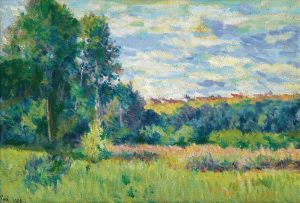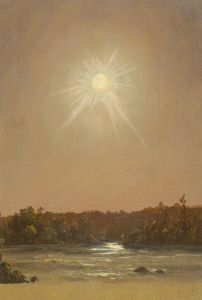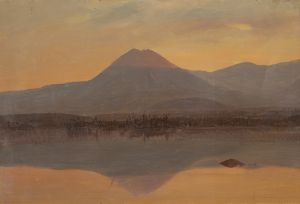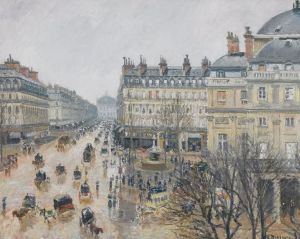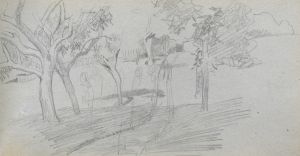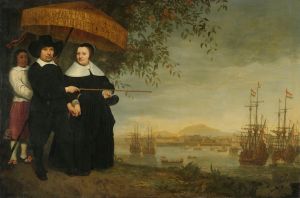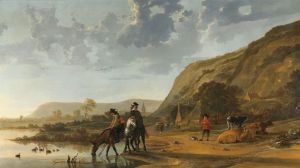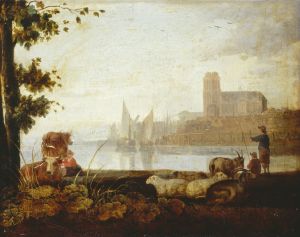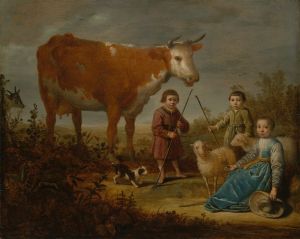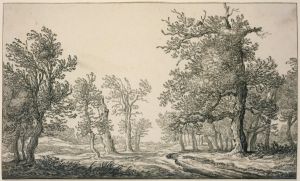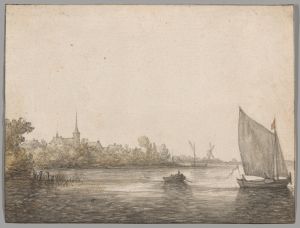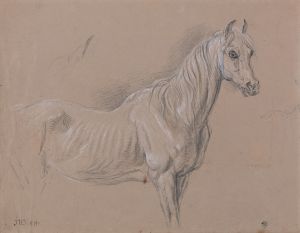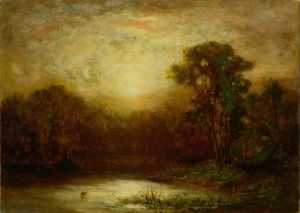
View on a Plain
A hand-painted replica of Aelbert Cuyp’s masterpiece View on a Plain, meticulously crafted by professional artists to capture the true essence of the original. Each piece is created with museum-quality canvas and rare mineral pigments, carefully painted by experienced artists with delicate brushstrokes and rich, layered colors to perfectly recreate the texture of the original artwork. Unlike machine-printed reproductions, this hand-painted version brings the painting to life, infused with the artist’s emotions and skill in every stroke. Whether for personal collection or home decoration, it instantly elevates the artistic atmosphere of any space.
Aelbert Cuyp was a prominent Dutch landscape painter of the 17th century, known for his idyllic and atmospheric depictions of the Dutch countryside. His works are celebrated for their luminous quality and the serene beauty of their compositions. Among his notable works is "View on a Plain," a painting that exemplifies Cuyp's mastery in capturing the tranquil essence of rural landscapes.
"View on a Plain" is a quintessential example of Cuyp's ability to blend naturalistic detail with a harmonious composition. The painting portrays a vast, open landscape, likely inspired by the Dutch countryside, which was a common subject in Cuyp's oeuvre. The scene is bathed in the warm, golden light of the late afternoon or early evening, a characteristic feature of Cuyp's work that enhances the sense of calm and timelessness.
In the foreground of the painting, Cuyp often included figures, such as shepherds or travelers, which serve to animate the scene and provide a sense of scale. These figures are typically depicted in leisurely poses, suggesting a moment of rest or contemplation amidst their journey. The inclusion of animals, particularly cattle or horses, is another hallmark of Cuyp's landscapes, adding to the pastoral charm and emphasizing the connection between humans and nature.
The middle ground and background of "View on a Plain" are dominated by expansive fields and distant hills, rendered with a delicate touch that conveys both the vastness and the subtle undulations of the terrain. Cuyp's use of light and shadow is particularly effective in creating depth and atmosphere, with the sky often playing a significant role in the composition. The clouds are painted with a soft, diffused light that suggests a gentle breeze and enhances the overall tranquility of the scene.
Cuyp's landscapes are noted for their idealized yet realistic portrayal of nature, reflecting the influence of both the Italianate style and the Dutch realist tradition. His ability to capture the interplay of light and atmosphere was highly influential, and his works were admired by later artists, including the English landscape painters of the 18th and 19th centuries.
"View on a Plain" exemplifies Cuyp's skill in creating a sense of harmony and balance within his compositions. The painting invites viewers to immerse themselves in the serene beauty of the natural world, offering a moment of respite from the hustle and bustle of everyday life. Cuyp's landscapes, including this work, continue to be appreciated for their timeless appeal and their ability to evoke a sense of peace and contemplation.
While specific details about the provenance or current location of "View on a Plain" may not be readily available, the painting remains an important part of Aelbert Cuyp's legacy as one of the leading landscape painters of the Dutch Golden Age. His works are held in high esteem in collections around the world, celebrated for their contribution to the development of landscape painting and their enduring beauty.





